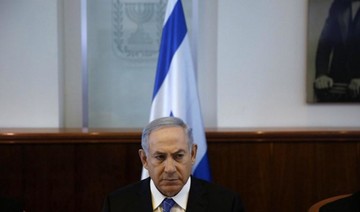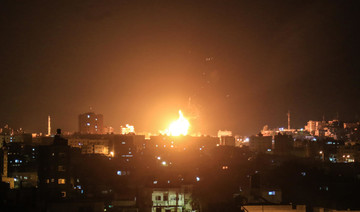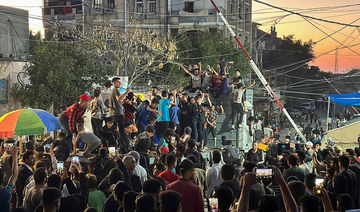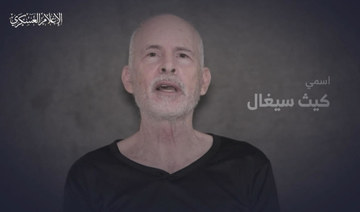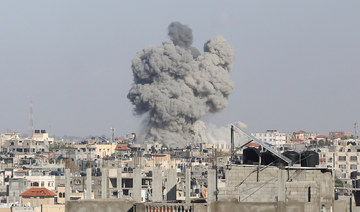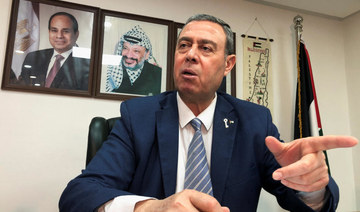GAZA CITY, Palestinian Territories: A Palestinian wounded last month during clashes on the Israel-Gaza border succumbed to his wounds on Monday, the health ministry in the Palestinian enclave said.
A spokesman for the ministry said in a statement “Bissam Safi, 22, died this morning.”
He said he had been hit in the head with a tear gas cannister on February 22 during protests and clashes near Khan Yunis in southern Gaza.
For nearly a year protesters have been gathering along the border calling for Palestinian refugees and their descendants to be allowed to return to former homes now inside Israel.
Israeli officials say that amounts to calling for the Jewish state’s destruction and accuse the Gaza Strip’s Islamist rulers Hamas of orchestrating the protests.
At least 254 Palestinians have been killed by Israeli fire since the protests began in March 2018, the majority shot during weekly border protests and clashes.
Others have been hit by tank fire or air strikes in response to violence from Gaza.
Two Israeli soldiers have been killed over the same period.
Israel and Hamas, which has controlled the blockaded Gaza Strip for over a decade, have fought three wars since 2008.
Palestinian wounded in Israel border clashes dies: Gaza ministry
Palestinian wounded in Israel border clashes dies: Gaza ministry

- At least 254 Palestinians have been killed by Israeli fire since the protests began in March 2018
- Two Israeli soldiers have been killed over the same period
Jordan’s King Abdullah presses Biden to avert Israel offensive in Rafah
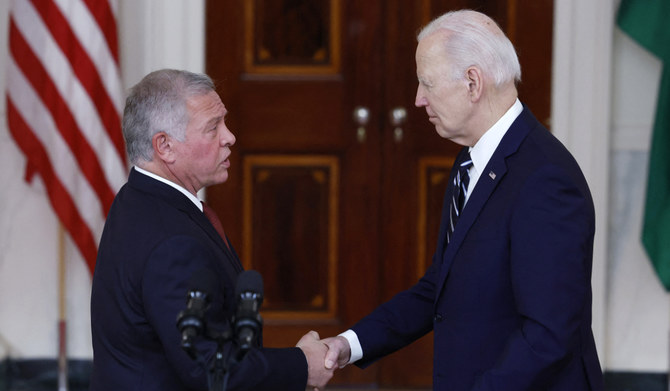
- Israel has killed more than 34,000 Palestinians, according to Gaza’s Health Ministry
- The Biden administration and Israeli officials remain at odds over Israel’s planned military incursion in the southern Gaza city of Rafah where it told Palestinians to start evacuating some parts on Monday
WASHINGTON: Jordan’s King Abdullah told US President Joe Biden in a private meeting on Monday that an Israeli offensive in Rafah would lead to a “new massacre” of Palestinian civilians and urged the international community to take urgent action.
“The king warned of the repercussions of the Israeli ground offensive on Rafah, which could cause a regional spillover of the conflict,” a statement from the Jordan royal court said after Abdullah had lunch with Biden at the White House.
Israel carried out airstrikes in Rafah on Monday and told Palestinians to evacuate parts of the city where more than a million people uprooted by the seven-month war are crowded together.
On Sunday, Hamas reiterated its demand for an end to the war in exchange for the freeing of hostages, and Israeli Prime Minister Benjamin Netanyahu flatly ruled that out. Hamas also attacked the Kerem Shalom crossing into Gaza, which Israel said killed three of its soldiers.
In a phone call on Monday with Israeli Prime Minister Benjmain Netanyahu, Biden pressed Netanyahu not to go ahead with a large-scale Israeli military offensive in Rafah. The US president has been vocal in his demand that Israel not undertake a ground offensive in Rafah without a plan to protect Palestinian civilians.
The Jordanian statement said Abdullah in his meeting with Biden “warned that the Israeli attack on Rafah, where 1.4 million Palestinians are internally displaced as a result of the war on Gaza, threatens to lead to a new massacre.”
“His Majesty stressed the importance of all efforts that seek an immediate ceasefire in Gaza,” it said. “The king and the US president affirmed their commitment to working to reach a sustainable ceasefire in Gaza, stressing the importance of facilitating the delivery of sustainable humanitarian aid to the Strip in light of the dire needs.”
The Biden administration and Israeli officials remain at odds over Israel’s planned military incursion in the southern Gaza city of Rafah where it told Palestinians to start evacuating some parts on Monday.
Biden last met King Abdullah at the White House in February and the two longtime allies discussed a daunting list of challenges, including the looming Israeli ground offensive in southern Gaza and suffering of Palestinian civilians. Jordan and other Arab states have been highly critical of Israel’s actions and have been demanding a ceasefire since mid-October as civilian casualties began to skyrocket.
The war began after Hamas stunned Israel with a cross-border raid on Oct. 7 in which 1,200 people were killed and 252 hostages taken, according to Israeli tallies.
More than 34,600 Palestinians have been killed and more than 77,000 wounded in Israel’s assault, according to Gaza’s health ministry.
What’s in the three-phase ceasefire deal Hamas backs, but Israel does not?
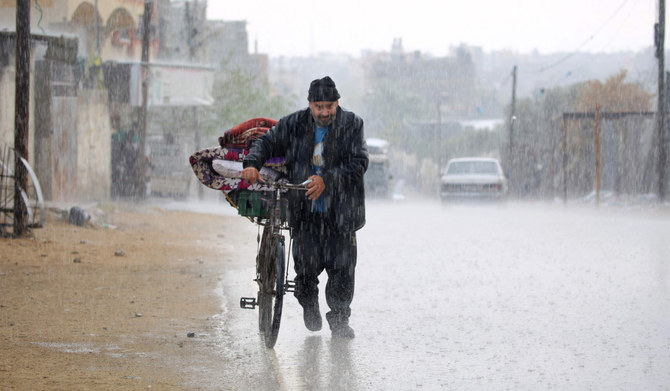
- Israel has killed more than 34,000 Palestinians, according to Gaza’s Health Ministry
CAIRO: Palestinian Islamist group Hamas said on Monday it had agreed to a three-phased deal for a ceasefire and hostages-for-prisoners swap, although an Israeli official said the deal was not acceptable to Israel because terms had been “softened.”
The United States, which alongside Qatar and Egypt has played a mediation role in the talks, said it was studying the Hamas response and would discuss it with Middle East allies.
Based on details announced so far by Hamas officials and an official briefed on the talks, the deal that the Palestinian group said it had agreed to included the following:
PHASE ONE
• 42-day ceasefire period
• Hamas releases 33 Israeli hostages in return for Israel releasing Palestinians from Israeli jails.
• Israel partially withdraws troops from Gaza and allows free movement of Palestinians from south to north Gaza.
PHASE TWO
• Another 42-day period that features an agreement to restore a “sustainable calm” to Gaza, language that an official briefed on the talks said Hamas and Israel had agreed in order to take discussion of a “permanent ceasefire” off the table.
• The complete withdrawal of most Israeli troops from Gaza.
• Hamas releases Israeli reservists and some soldiers in return for Israel releasing Palestinians from jail.
PHASE THREE
• The completion of exchanging bodies and starting the implementation of reconstruction according to the plan overseen by Qatar, Egypt and the United Nations.
• Ending the complete blockade on the Gaza Strip.
Ex-Gaza hostages in Auschwitz for March of the Living
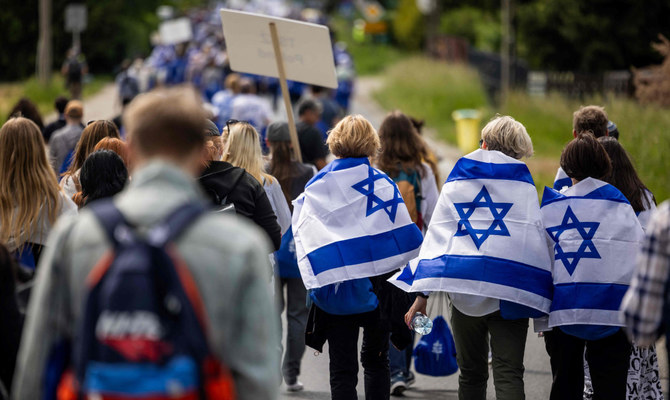
- One million European Jews died at the camp between 1940 and 1945 along with around 80,000 non-Jewish Poles, 25,000 Roma and 20,000 Soviet soldiers
OSWIECIM, Poland: Released Gaza hostages joined Holocaust survivors on Monday for an annual march in southern Poland to commemorate victims of the Auschwitz-Birkenau death camp.
Survivors of the October 7 attack on Israel by Hamas also joined the “March of the Living” at the site, which has become a symbol of Nazi Germany’s genocide of European Jews.
“I came to show that we’re alive and that we’ve built a country,” Bella Haim, 86, told AFP.
Her grandson Yotam Haim was captured by Hamas militants on October 7 and later gunned down in Gaza by Israeli soldiers who failed to realize he had escaped from his captors.
“I told myself that I couldn’t remain silent and I’m marching here in the name of my grandson Yotam and the victims” of the attack, Bella said.
She was part of an Israeli delegation that flew to Poland for the march in the southern city of Oswiecim, which numbered around 8,000 people this year.
Every year, Jews and non-Jews from around the world take part in the event at the site of the former death camp, which was built by Nazi Germany after it invaded Poland.
One million European Jews died at the camp between 1940 and 1945 along with around 80,000 non-Jewish Poles, 25,000 Roma and 20,000 Soviet soldiers.
The camp was liberated by the Red Army in January 1945.
This year’s March of the Living was briefly disrupted by pro-Palestinian protesters who spoke out against what they called Israel’s “genocide” in Gaza.
The war in Gaza broke out after Hamas’s unprecedented October 7 attack on Israel, which resulted in the deaths of more than 1,170 people, mostly civilians, according to an AFP tally of Israeli figures.
The militants also took some 250 hostages, of whom Israel estimates 128 remain in Gaza. The army says 35 of them are dead.
Vowing to destroy Hamas, Israel’s retaliatory offensive has killed at least 34,735 people in Gaza, mostly women and children, according to the Hamas-run territory’s health ministry.
Houthis ‘dismantle spy network aiding Israel, US’
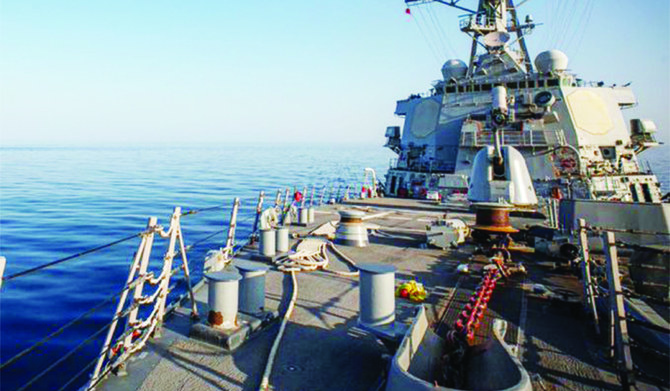
- Red Sea and the Gulf of Aden, disrupting global trade in a campaign they say is in solidarity with Palestinians amid the Israel-Hamas war
- Israel has killed more than 34,000 Palestinians in Gaza, mostly women and children, according to the health ministry in the Hamas-run territory
DUBAI: The Houthis on Monday said they had exposed a “spy” network aiding the US and Israel and arrested suspected members of it.
The Houthi-run Saba news agency published footage of the detained men, describing them as “spies recruited to collect information and monitor sites operated by the Houthi armed forces on Yemen’s western coast for the benefit of the American and Israeli enemy.”
According to Saba, the group had been recruited after the Houthis in November began targeting vessels in the Red Sea and the Gulf of Aden, disrupting global trade in a campaign they say is in solidarity with Palestinians amid the Israel-Hamas war.
The report did not specify the number of suspects arrested, but unverified images Saba shared on social media showed at least 18 people.
No evidence was provided to substantiate the charges, which Saba said the suspects had confessed to.
The Houthis, who control parts of war-torn Yemen, “will spare no effort in carrying out their responsibility to secure the home front and protect it from infiltration attempts by the American and Israeli enemy,” Saba said.
In December, the US announced a maritime security initiative to protect Red Sea shipping from Houthi attacks.
These attacks have forced commercial vessels to divert from the busy shipping lane, which normally carries 12 percent of global trade.
Since January, the US and Britain have launched repeated strikes on Houthi targets in Yemen in response to their attacks on shipping.
The Houthi-run news agency said the suspects were tasked with monitoring anti-ship missile and drone launch sites and the locations of Houthi vessels and submitting coordinates to facilitate strikes by the US as well as British forces.
The strikes have done little to deter the Houthis, who have vowed to target Israeli, American, and British vessels as well as all ships heading to Israeli ports.
On Friday, the Houthis threatened to extend their attacks into the Mediterranean Sea.
Concerns grow as Khamsin winds bring desert fly invasion to Egypt
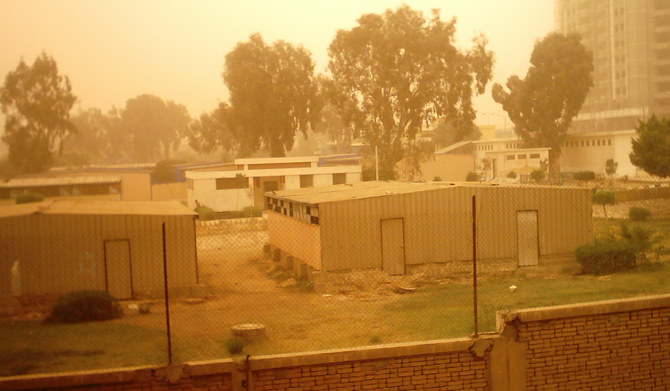
- Ali Younis, a professor of entomology at Cairo University, said the desert fly was similar to a common housefly, some 3.5mm-6.5mm in length and varying in color from black and brown to blue
CAIRO: An invasion of desert flies in Egypt has sparked debate about how to handle the insects and the health hazards they can pose.
The flies have been carried by the Khamsin winds — dry, sand-filled winds from the southern Sudanese deserts — and have been spotted in Marsa Matrouh. Meteorologists have warned the public to keep their windows closed.
Ali Qutb, a climate professor at Zagazig University and former vice president of the Egyptian Meteorological Authority, told Arab News: “Egypt’s geographical location and climate make it particularly susceptible to these flies. The desert fly problem peaks during the summer and is exacerbated by the Khamsin winds of spring, which carry sand from the desert, aiding the spread of these flies from their natural desert habitats to populated areas.”
He added: “These flies thrive in tropical and subtropical regions and have been documented throughout Saudi Arabia. They prefer desert and rural environments, often attacking nomadic communities, (and) especially children, in large numbers.
“The primary reasons for their spread include high temperatures, which facilitate their rapid breeding, alongside inadequate health surveillance and ineffective pest control programs. Controlling desert flies involves removing breeding sites such as trash and organic debris, employing fly traps, and applying insecticides in affected areas.”
Ali Younis, a professor of entomology at Cairo University, said the desert fly was similar to a common housefly, some 3.5mm-6.5mm in length and varying in color from black and brown to blue.
He said: “These flies rarely enter buildings; they prefer light areas over dark and can tolerate high temperatures. They typically congregate around eyes and wounds, where they can cause intense irritation.”
Highlighting the potential dangers, Younis added: “Desert flies can transmit a multitude of diseases to humans, including viral diseases like spinal meningitis, bacterial infections such as anthrax, cholera, and typhoid, and protozoal diseases like amoebiasis and tapeworms. Their bites are not only painful but can also cause severe itching.”
He said there were several effective deterrents: “Using incense is a popular method to repel desert flies, as is a mixture of vinegar and soap. Placing a quarter cup of vinegar mixed with a quarter cup of liquid soap in a deep bowl in the area to be cleaned and leaving it for a prolonged period can help.
“Additionally, herbs like basil and wild mint are effective in repelling these flies from homes, and a mixture of hot pepper and water sprayed around outdoor areas can also be beneficial.”
The Meteorological Authority has issued warnings about the desert fly invasion, advising citizens to keep doors and windows securely closed and use mosquito nets while sleeping. Other precautions include maintaining personal hygiene and keeping homes clean, removing sources of stagnant water, and using insect repellent when outdoors.


